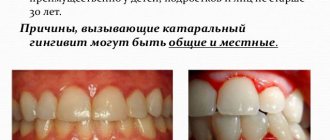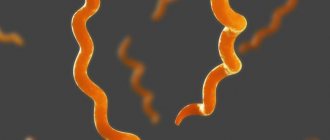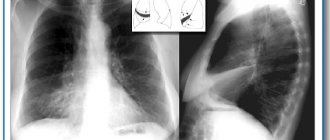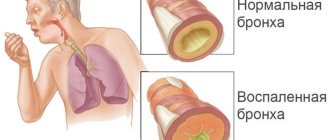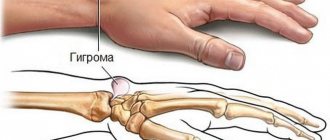Inflammation of the middle ear is a fairly common phenomenon in the practice of ENT specialists, which is called catarrhal otitis media. The form of the disease occurs both acute and chronic, and in the process of inflammation, all cavities and structures of the middle ear are affected. Due to the immaturity of the auditory tube, children are more often susceptible to pathology, but adults also suffer from this disease. During the course of the disease, the Eustachian tube becomes blocked, and fluid mixed with pus enters the ear cavity (depending on the stage of inflammation).
Causes of the disease
Often, the occurrence of catarrhal otitis media is provoked by an infection entering the auditory tube and developing in the nasopharynx. The impetus for the manifestation of the disease, both in adults and in children, is:
- sinusitis in any form (sinusitis, sinusitis),
- adenoids,
- inflammation of the tonsils,
- rhinovirus infection, influenza, ARVI,
- bacterial flora (streptococci, staphylococci),
- infectious diseases (measles, scarlet fever, tuberculosis, etc.).
Viruses and bacteria are spread by coughing, sneezing or blowing your nose. In children, during infectious diseases, infection occurs hematogenously (through the blood).
Some conditions and pathologies of the patient’s body also contribute to the development of catarrhal otitis media. These include:
- frequent hypothermia,
- lack of vitamins,
- rickets,
- diabetes,
- kidney and liver diseases,
- weakened immunity,
- frequent regurgitation and constant lying down (newborn babies),
- barotrauma,
- aggressive coughing or frequent sneezing provokes increased pressure and strain, thereby supplying all structures of the middle ear with infected secretions.
Right-sided or left-sided catarrhal otitis media is more often detected in adult patients. With children the situation is more complicated, since the child is not always able to properly clean and rinse the nasal passages on his own in a timely manner. In addition, it is difficult to immediately determine that it is the baby’s ear that hurts. For these reasons, as well as due to the short length of the auditory tube, children have a bilateral form of otitis media.
Important: if a woman suffers otitis media during pregnancy, the newborn child may be born with pathologies, for example, completely deaf.
Symptoms of the disease
There is an opinion that the symptoms of purulent and catarrhal forms are similar, but this is not entirely true. Acute catarrhal otitis media has a rapid course and is determined by the following symptoms:
- Aching pain in the affected ear, which radiates to the teeth, temporal or parietal areas, resulting in deterioration of sleep.
- The ear canals are red, swollen, the eardrum is motionless and retracted, which provokes hearing loss.
- The process of blowing your nose or sneezing is accompanied by pain.
- Deterioration of hearing, congestion, accompanied by noise and ringing in the ears.
- An increase in body temperature and the manifestation of general malaise (weakness, nausea, aches, loss of appetite).
One of the main complaints at the initial stage of pathology development is autophony. The patient manages to hear his own voice with one blocked ear. During the process of exudation, autophony passes, giving way to increased noise in the affected ear, and shooting pains periodically occur.
It should be noted that most often acute serous otitis media occurs in a unilateral form. Bilateral disease is a fairly rare occurrence.
Symptoms of the disease in children
If acute serous otitis is detected in a child, the latter intensively scratches the ear, cries, eats, and the listed signs include vomiting and convulsions against a background of elevated (in children under 1 year of age - up to 40 0C) temperature.
The disease at this stage lasts about 4 days, then catarrhal otitis in children, due to increased intoxication, is replaced by its purulent form. Sometimes this happens without significant signs, without causing discomfort to the child. Pathology is discovered randomly, often at a late stage of development.
Features of the development of pathology
This is the initial stage of development of the inflammatory process in the cavity of the middle ear canal. At this phase, inflammation begins to actively develop.
Under the influence of viruses and bacteria, a change occurs in the structure of the mucous membrane, and increased permeability of the epithelial layer of the blood and lymphatic vessels in the ear canal is formed.
In parallel, at the site of the pathological process, leukocytes begin to intensively form in the blood fluid, and the process of secretion production is activated.
The result is swelling, hyperemia of the surface of the membranes in the ear canal, and dysfunction in air circulation. This stage of development of the disease lasts on average up to four days, after which the disease passes into the next stage, at which the production of secretion in the tympanic cavity begins.
The next stage in the development of pathology is serous, in which the mucus actively heats up. Then, when pus stagnates, a purulent form of otitis is diagnosed.
How to get rid of trouble
The beginning of treatment involves bed rest and elimination of ear pain. Special drops or folk remedies (sterile oil, vodka, etc.) will help you cope with this. In addition to compresses, local heating with a blue lamp, a heating pad, and the use of physiotherapy is also required. Important: in the presence of high temperature, as well as during the purulent stage of otitis, these procedures can worsen the condition. If complications occur, urgent hospitalization is required.
The most competent approach is to contact an otolaryngologist. The specialist will assess the condition of the ears, nasal cavity and oropharynx, lymph nodes, and listen to complaints. Based on the patient’s age and the information received, he will be given the following treatment regimen:
- Elimination of swelling in the area of pathology using vasoconstrictor drops.
- Antihistamines may be used.
- Elimination of local pain and inflammation.
- Antibacterial drops (the flora of the ENT organs is preliminarily examined). If there is no effect from local therapy, take medications orally.
Acute catarrhal otitis in adults when taking antibiotics goes away in 7-10 days; children under 2 years old will have to take the drugs for about 14 days. Read more about the factors influencing the recovery time for otitis media.
Folk remedies
How to treat otitis media at home? It is impossible to cure acute catarrhal otitis media with folk remedies, but drug treatment can be supported and helped. For example, in addition to drops or alcohol solutions, if your ear hurts, you can instill oil.
- Warming compresses. Mix 50 ml of water and 50 ml of alcohol, heat the solution. Soak gauze in this solution, wring it out and place it on top of the ear, but so that the auricle is open. Lubricate it with baby cream or Vaseline. Leave the compress on for 2 hours.
- Baked onion and plantain. You can apply baked onion or plantain to your ear. This procedure will help the boil break out as quickly as possible.
- Decoction of bay leaf. This method is very effective. You will need one glass of water and five bay leaves. Mix, bring to a boil and let stand. Drink three tablespoons twice a day and drop ten drops into the ear.
- Steam bath. After your boil has broken through, you can take a steam bath. To do this, you need to boil the kettle, cover the nose of the kettle with something warm and direct the escaping steam into your ear (the distance should be at least 50 cm!). Warm the ear for 3 minutes, and then wipe your face with a cold towel. This procedure will need to be performed ten times. A steam bath helps relieve discomfort in the nose, ear and throat.
- Salt. Salt is a universal remedy; many things can be done from it. You can heat one glass of salt in the microwave, then put it in a bag made of thick fabric, wait until it becomes hot, but not scalding, and apply it to the area next to the ear. You can’t put a bag directly on your ear! Hold for 5-10 minutes. This procedure can be repeated many times until complete recovery. If you don't have salt, you can use rice.
- Garlic. Garlic can remove germs and relieve pain. Take 2-3 cloves of garlic and boil them in water for 5 minutes. Remove, chop and salt. Then put this mixture in gauze and apply it to the area next to the ear. Also take garlic internally daily.
- Apple vinegar. Apple cider vinegar speeds up the treatment of ear fungus. Take apple cider vinegar, alcohol or water and mix in equal proportions. Wet the swab and insert it into your ear for 5 minutes. Then drain all the mixture from your ear. You can also use white vinegar. You can also gargle with apple cider vinegar.
Physiotherapy
The essence of treatment is based on stabilizing the patient’s condition and eliminating the resulting pathology. This is facilitated by:
- warming up with a blue lamp,
- vibration massage of the tragus,
- Sollux (infrared radiation),
- laser therapy,
- UHF,
- Ural Federal District,
- use of electrophoresis.
This therapy and the number of sessions are regulated by an otolaryngologist. This treatment quite effectively stops the disease, the patient’s condition improves in the shortest possible time. It should be remembered that after the session you need to rest for half an hour. At the same time, it is necessary to minimize going outside, especially during the cold season.
Treatment of pathology in a child
In childhood, it is not possible to quickly get rid of acute catarrhal otitis media; it will take several weeks. Treatment of otitis in children includes a set of measures. In this case, a very infant child is put on a thin cap to prevent excessive hypothermia.
You should not wash your hair during therapy.
- First of all, you will need to clear your nasal passages and normalize your breathing. To remove mucus, you can use an aspirator or a small rubber syringe.
- The doctor will prescribe antibiotics (orally or by injection).
- Special drops recommended by a specialist will help improve the patency of the auditory tube.
Warming with vodka compresses or blue lamp light is allowed, but this therapy, like any other, must be carried out with the permission and under the supervision of a qualified physician.
The purulent form of the disease involves treating the ear cavity with cotton wool soaked in alcohol. There is mud therapy, ultraviolet irradiation, and thermal physiotherapy. You can use ear drops, but they are contraindicated for children under one year of age.
Treatment of catarrhal otitis
Treatment of this disease should only be prescribed by an otolaryngologist, since serious complications can occur with the wrong approach to treatment. Before visiting a doctor, the patient must be provided with bed rest.
Drug treatment
Treatment in each case is selected individually, taking into account the severity of the disease. Therapy is primarily aimed at eliminating unfavorable factors that affect the condition of the auditory tube. Vasoconstrictor nasal drops are prescribed to relieve swelling. This can be Galazolin, Otrivin, Naphthyzin, Nazivin, etc. Antihistamines (Tavegil, Suprastin, Claritin, Erius) can also be used to relieve swelling.
To relieve pain, local anesthetics are used, for example, Otipax, or general anesthetics - Nurofen, Pentalgin, etc. The latest remedies will also help get rid of elevated body temperature; in addition to them, you can use Aspirin or Paracetamol.
When the viral nature of the disease is established, antiviral drugs are prescribed. If the origin of the disease is bacterial, then antibacterial agents must be used. First of all, they are prescribed locally, in the form of drops, but in some cases systemic use is also possible.
To reduce secretion into the lumen of the auditory tube and tympanic cavity, the anti-inflammatory drug Erespal or stimulators of mucociliary transport - Fluimucil, Sinupret and others - can be prescribed.
When treating otitis of this type, boric alcohol can be used. This is allowed only if the membrane and ear canal are intact. A turunda is placed in the ear, and alcohol is dripped onto it.
It must be remembered that any product must be slightly warmed up before instillation into the ear. To do this, for example, the bottle can be placed in a container of hot water. Drops are instilled into the ear in a lying position, and then the ear canal is closed with a cotton wool pad.
Physiotherapy
The complex treatment of otitis of the catarrhal type also includes a variety of physiotherapeutic procedures, the purpose of which is a speedy recovery and prevention of the transition of otitis to a more severe exudative or purulent form. Inhalation of proteolytic enzymes in the form of a coarse aerosol may be prescribed through the nose. Sometimes inhalations of interferon or lysozyme are additionally prescribed.
Moderate heating of the face and ear with a Minin reflector and the administration of microwaves to the ear area are also indicated. Laser therapy in the area of the pharyngeal mouth of the auditory tube, ultraviolet radiation, vibration massage of the tragus area and pneumomassage of the eardrum can also be used.
In case of violation of the drainage function, endonasal electrophoresis, endoural-behind-the-ear diadynamic therapy and catheterization of the auditory tubes are prescribed.
If during physiotherapeutic procedures a constant noise appears, then in this case such therapy should be discontinued, since irritation of the auditory nerve is possible.
Preventive measures
Treatment of catarrhal otitis is a rather troublesome task, which is easier to prevent. To prevent otitis media, it is necessary to use timely and effective therapy for the treatment of colds or acute respiratory viral infections, and not to neglect carious teeth. Frequent recurrent infections are best treated with antibiotics.
After bathing, both adults and children need to thoroughly clean their ears of water. If a child is prone to otitis media, the swimming season should begin with ear cleaning by an otolaryngologist. After water procedures, it is better for children to instill antiseptic ear drops.
It is important to teach the child to blow his nose correctly (with his mouth slightly open), otherwise the secreted secretion will go into the auditory tubes. Feeding a child with mother's milk develops the immunity necessary to resist the disease.
In any case, parents monitor the child’s health, so it is important to understand the rules for caring for him yourself.
How is the diagnosis done?
To identify changes in the eardrum, the patient is sent for otoscopy, the following indicators are noted:
- Obvious redness of the eardrum through blood-filled vessels.
- The eardrum is elongated with characteristic impaired mobility.
Otoscopic picture of otitis media
It is important! If the eardrum is pulled into the ear cavity, then hearing loss cannot be ruled out, which develops as a result of poor mobility of the auditory ossicles.
